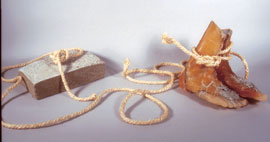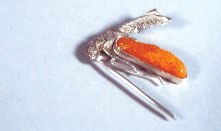
Artist's Statement
When I think of the role that the artist plays within a culture, it is that of an observer. I consider this observation to be the propelling force that brings on the actualization of my ideas into the identity of physical art objects. Observation of the world around me, the intricate interactions of people, the processes by which the objects that infuse our lives are created and get to us, and the roles that these elements all play into the vast web of human life, culture, and interaction is the fuel for which my ideas thrive.
This observation is rooted in an examination of the processes and systems that people have set up for the exchange of goods and commodities. I am interested in the processes that those physical objects envelop in their creation from natural resources, to their refinement, to their distribution, and eventual consumption and disposal. When I think of the objects that I encounter in my mundane existance, like that of the pen I write with, or the computer I am currently typing on, I think not only of the actual object, but the intricate web of process and interaction that brings me to that object; the history that comes along with every element of that object, and its future. This web includes not only the physical systems through which consumables are manufactured, but also the web of human interactions and observations that are involved, such as the research qand marketing that goes into the object, the design of packaging, the distribution of the object in the retail environment, and the clerks who will sell the object.
This concept of observation of the trails that objects, and people create within the realms of our consumer culture (even the paper trails of credit card receipts) links into the attention that is given to the materiality of the work that I create. The materials from which I derive my work fill the role of modern human artifacts; castaways of our consumerism, and objects that archaeologists and anthropologists may some later day be examining to understand us. This dialogue of materiality, and its interaction with the themes of the work provides different entry points through which the observer can come to the work.
